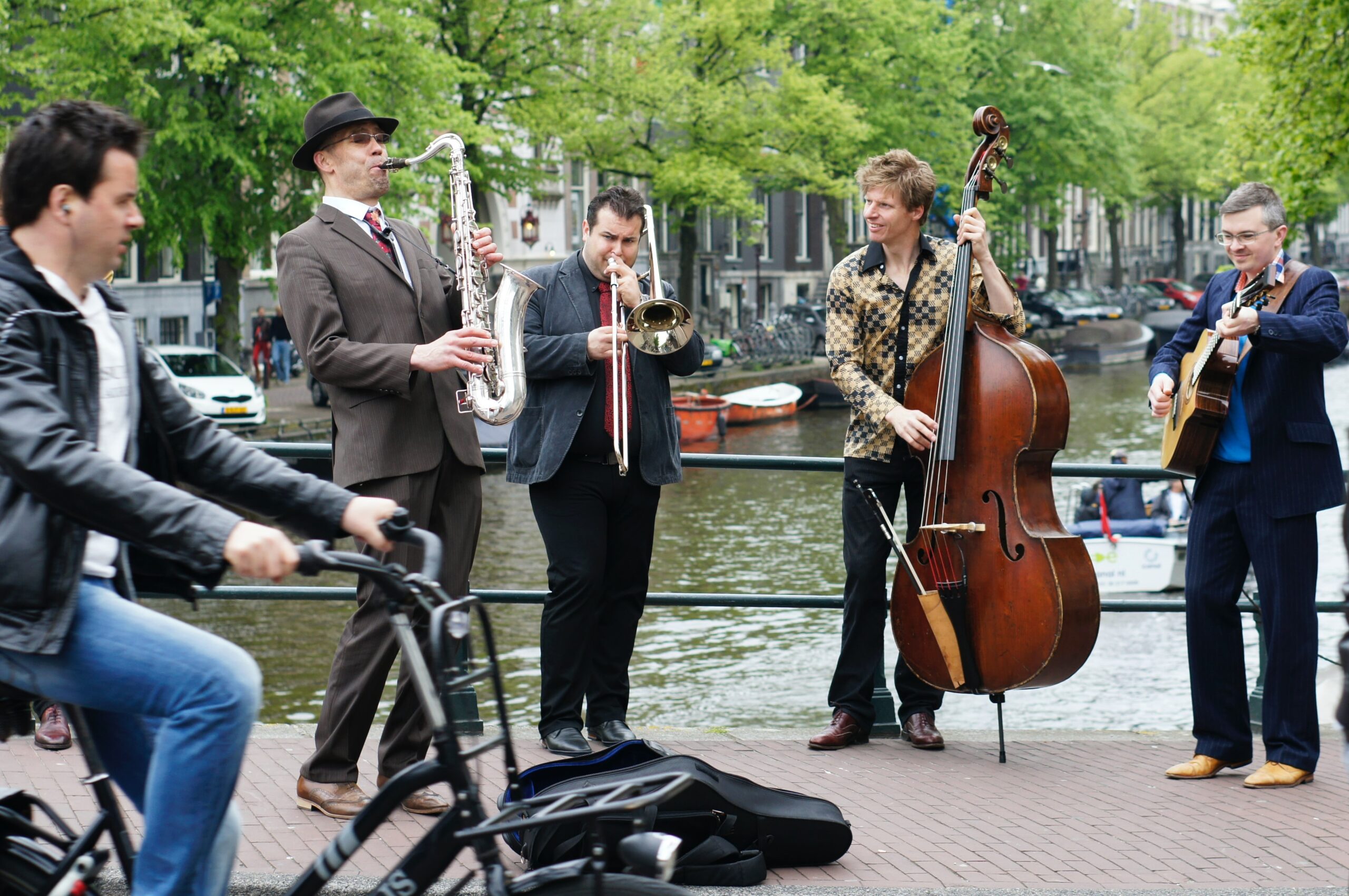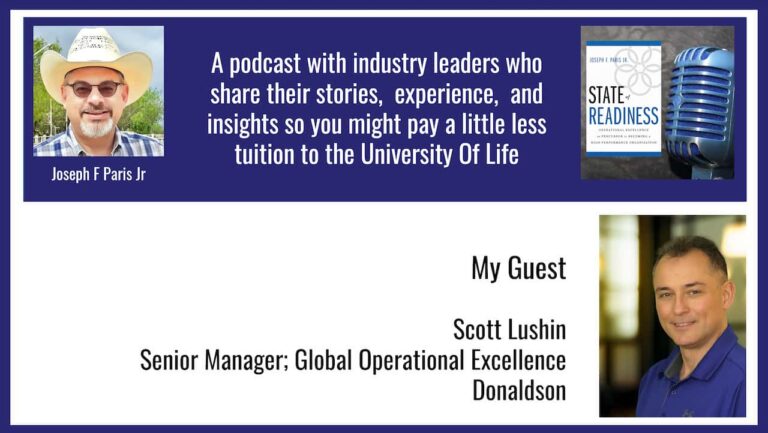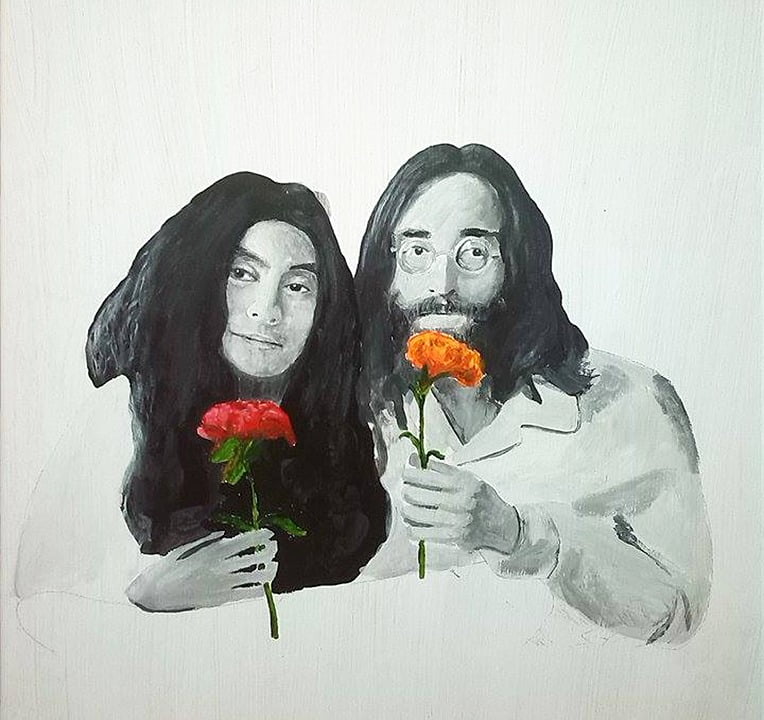It’s Time to Jam
As the sun traverses the heavens ever higher with each and every day, winter has finally been forced to release us from its frigid embrace. With every passing day, the mud gives way to green grass, the trees burst with the youthfulness of light green leaves, fruit trees are in full blossom and abuzz with bees, flowers blanket the earth in a kaleidoscope of color – and the street musicians play their Jazz for change.
I would suspect that, by now, almost all of you have strolled a city street on a sunny day and passed by a group of musicians playing for pocket change – with some of the more advanced even selling CD’s of their music. Perhaps you have dropped some change in the guitar case, or stopped and listened for a while – maybe you were even drawn into the act. In any case, I bet you had a smile on your face.
So it was last year in July when I was asked to participate in a conference in Boston sponsored by George Henderson of Top Quartile Performance Institute (TQPI) that I met William “Bill” Catucci. Bill has led a very colorful life and has had a stellar career – including a 33 year career at AT&T and holding the position of CEO at AT&T Canada Long Distance Services.
During one of the many opportunities for networking and conversation, one of the topics for discussion was management models. Bill started talking about the “Jazz Model” and, thinking JAZZ was an acronym, I couldn’t help but ask what “J.A.Z.Z.” stood for.
“Man, if you have to ask what Jazz is, you’ll never know.”
Louis Armstrong
Bill started by talking about Jazz – the music and the people who play it.
“Did you ever stop and listen to Jazz? Have you ever noticed that the musicians in a group playing Jazz all seem to be doing their own thing? Seemingly coming and going as they please, but not really? And even though there is a lot of improvisation, it all seems to work?”
“One chord is fine. Two chords are pushing it. Three chords and you’re into jazz.”
Lou Reed
“It’s the same managing using the ‘Jazz Model’. Each member of the group is talented in their own way and have a command of their tools. They aren’t afraid to innovate, go their own way, experiment – but they are always a member of the group and always try to support one another. If they make a mistake, so what. You live, you learn. But when it works, Man, that’s Jazz.”
“There’s something beautifully friendly and elevating about a bunch of guys playing music together. This wonderful little world that is unassailable. It’s really teamwork, one guy supporting the others, and it’s all for one purpose, and there’s no flies in the ointment, for a while. And nobody conducting, it’s all up to you. It’s really Jazz – that’s the big secret.”
Keith Richards
So that evening, after the deliberations of the conference was over for the day, I strolled the streets of Boston with a heightened sense of awareness for the street performers – those playing Jazz in particular.
On Boylston Street, I came across these three musicians and they were playing some pretty cool Jazz – and I got what Bill was telling me. Each played in their own way, in their own lane, but always aligned and coming back together every once in a while. At that moment, life was pretty groovy.

I compared that with the many times I have gone to the Symphony or to the Opera. All of the players were all very structured and integrated – and the performance approached a level of perfection that was precise in its delivery. You can see it in the set-up.
I felt as if I were watching it on the television and when I closed my eyes, it could have been a recording. I was a spectator, not a participant. It was all positively predictable and faultless – and positively boring.
Then I started to compare and contrast the two models. Certainly, each has its merits and its detriments, but of which would I rather be a part? And why?
“I don’t get jazz. It always sounds like a bunch of toddlers let loose in a music room.”
Libba Bray
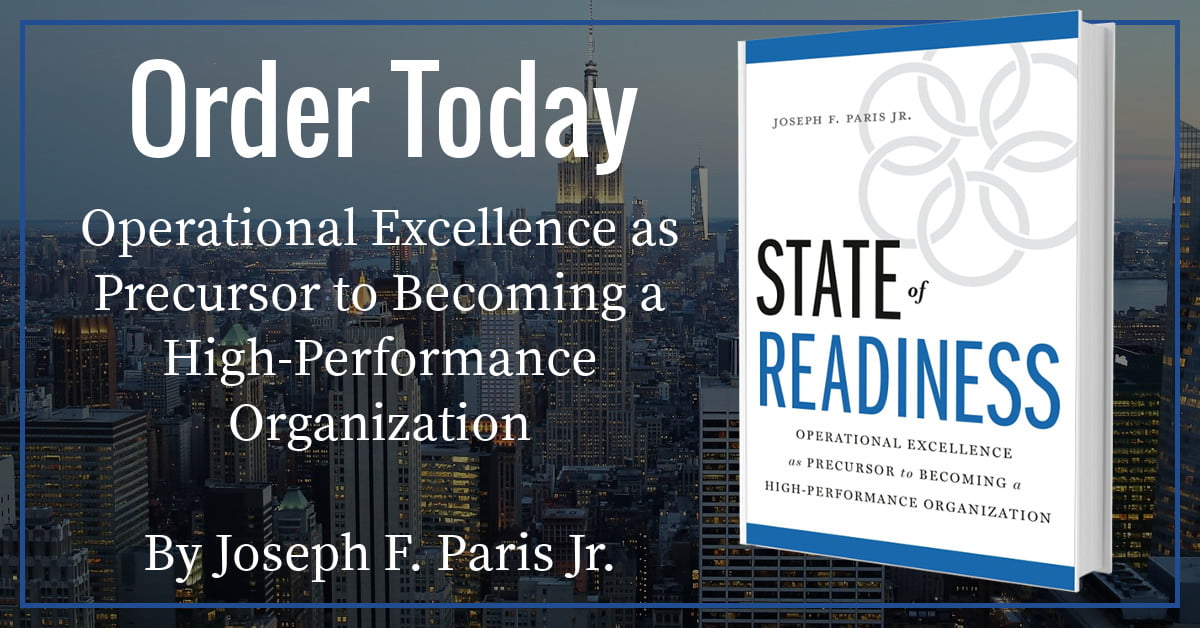
If we look at traditional symphony playing, we get a feeling of its being nostalgic, conservative and old-fashioned. It relies upon its customs for its identity. Nothing is out of place, there are no surprises, and there are no mistakes. The client gets precisely what they expected.
But there are opportunities for creativity and innovation even in the delivery of the most traditional of orchestra pieces.
For instance, compare the delivery and impact of Beethoven’s “Ode to Joy” in a formal orchestra setting with that of the “Flash Mob”.
Can you see and feel the difference?
But there is a greater challenge facing symphonies – viability. The costs associated with orchestras is increasing year on year, and at the same time audiences are shrinking. How can an orchestra harness the enthusiasm and energy of the street performances to increase audience attendance?
Andre Rieu is a Dutch Violinist and Orchestra Conductor who turned the traditional stoic delivery of classical music into a multi-media entertainment event for the entire family – one where the audience is not an observer, but a participant.
When you watch the video and listen to the music – and besides the fact that it is extravagant and the audience is engaged – do you notice anything specific about the conductor?
He doesn’t have a look of pain and intensity on his face as he leads his orchestra. Rather, he’s smiling and facing the audience.
He’s having fun. And because he is having fun, his audience is having fun.
However, all three productions have one thing in common – they are highly structured and everything that occurs happens because it is meant to happen. All of the brainstorming and innovation – if it transpires at all – occurs behind the curtains, out of the view of the client.
It’s important to know one’s client – one’s audience – this is for certain. And it’s important to deliver what they want. But do they always really know what they want? Or, perhaps better phrased, do they always know what is possible for them to want? When you look at the two presentations of “Ode to Joy”, in which audience would you rather be? And what about Andre Rieu?
“I’ve worked with some great orchestras and amazing classical musicians, but I don’t like the conceptualization of classical music as an elitist form of art.”
Serj Tankian
Which brings us to Jazz in general and street-Jazz in particular.
Watching the spontaneity, the innovation, and the unspoken collaboration of Jazz musicians always keeps us engaged. We don’t know what’s going to happen next – mostly because the musicians themselves don’t know what’s going to happen next. Not exactly, anyway.
You never see them with sheet music, and rarely see them with a song list. They just play what they want, when they want – individually and collectively. They join, then separate – experimenting and inventing – then rejoin again.
They play for the pleasure of playing. They play to explore the limits of their capability – not afraid to extend beyond or make a mistake. They play for the audience.
“And that’s the soulful thing about playing: you offer something to somebody. You don’t know if they’ll like it, but you offer it.”
Wynton Marsalis
With Jazz, it’s all about creativity, innovation, improvisation, quick-recovery. It’s about thinking on your feet. It is a real-lifeOODA-Loop (Observe, Orient, Decide, Act), which is the heart and soul of Operational Excellence.
Jazz musicians make it up as they go along. It’s the creation of art in real-time with no going back or re-thinking if a mistake is made. It is years of practice and experience which enables the Jazz group to be engaged as a group, but to encourage individual achievement and let one another shine in the spotlight whilst always supporting one another. With a talented and capable group, if one player stumbles, the others rally to their rescue. It’s exciting and full of pressure at the same time – perhaps the pressure adds to the excitement.
If we extrapolate this to business and its operations, success is often determined by the ability to encourage free-thinking – not just mastering the forensic details of one’s profession or responsibility, but to look beyond to what might be and to press to discover what could be. After all, people are not remembered for doing their job well, but for pressing beyond what is expected. This being true whether their ideas or attempts are spectacularly successful or a colossal failure.
As a friend and colleague said just today; “Take a side, because if you stay in the middle you get run over.”
A company that wins its future will operate more like a Jazz band than an orchestra. They will constantly seek to explore and reinvent themselves. They will always seek fresh, new ideas or marketplaces, or offerings – they are not afraid to take a risk or to fail. They will, more often than not, recognize when something special – something cool – is presented.
Here are a few characteristics of a business running on Jazz.
- Be extraordinary, be creative, innovative.
People don’t remember the ordinary, but they will remember the extraordinary – the people who think, even live, outside the box. Dare to be different. I can’t tell you how many times we have been successful because our approach was notably different from others. Benchmarking to your peers creates a homogenous commoditized world – where the only differentiator is price. Certainly, you will not always win – but when you do, it won’t be on the margins of a commodity. - Take risks as the norm, not the exception.
If you are technically capable, but never stretch, you are just a cog in the machine. You will punch-in and punch-out, but not be memorable and either you will become bored of the organization, or (more probably) the organization will become bored of you. A sure sign that you are not stretching your capabilities is that you never make a mistake. - Keep it new, change it around.
What works under one set of circumstances probably won’t work every set of circumstances – or even ever again. In a Jazz group, they might play a tune fast and hot one night and slow and sultry the next. In business, we need to know to take our talents and experience and instinctively adapt them to the situation at hand. Change the team around from time to time, or project to project. If people work with the same people, on the same stuff, all the time, the opportunity for growth becomes stifled and the creative energy gets drained. - Let your players enjoy their time in the spotlight – but don’t let anyone hog it.
Players love to play. They play for the enjoyment. They play for the personal satisfaction. They play for the recognition of their peers and the appreciation of the audience. By all means, let the players on your team play. Give them opportunity and room to create. Encourage them to share their ideas with others and to build a collaborative environment. But if anyone thinks they are the “star”, that they are irreplaceable, it’s time to make a change and remove that player.
The challenge is to remain a Jazz group even as you grow to the size of an orchestra – for with size comes complexity. There will be added complexity in communications and coordination. There will be added complexity in the messaging and the delivery. That is why every large company started as a small company full of entrepreneurial spirit – the spirit of Jazz.
“Jazz is about being in the moment. It’s not exclusive, but inclusive, which is the whole spirit of jazz.”
Herbie Hancock
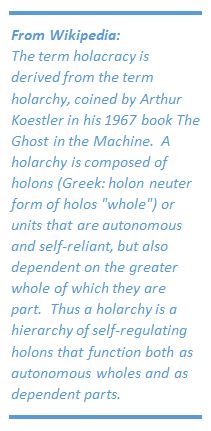
One company that has felt its entrepreneurial spirit, its Jazz, giving way to becoming an orchestra is Zappos – an online retailer of shoes and clothing whose headquarters is in Las Vegas Nevada. Founded in 1999, Zappos was acquired by Amazon in 2009, where it enjoyed benefits of a big corporation but also found itself losing its agility and becoming stoic – becoming an orchestra.
Feeling the creativity and innovation which made the company a success begin to erode away, in January of 2014, Tony Hsieh, CEO of Zappos, announced that it was doing-away with formal titles and hierarchy in favor of a hyper-flat and self-governing structure (called a “Holacracy”) that would increase transparency, decrease reaction time, and streamline operations. In the place of bosses and managers, Zappos will create hundreds of committee-like “circles” filled by employees.
Says Zappo’s John Bunch, Technical Advisor to the CEO; “As we scaled, we noticed that the bureaucracy was getting in the way of adaptability.”
Sounds to me like they are going to revisit their Jazz roots. It will be an interesting story to follow.
Read a related article here from Financial Times.
“Risk is at the heart of jazz. Every note we play is a risk.”
Steve Lacy
Day by day, the world is getting to be a smaller place. Except for the very young, businesses run the risk of losing their competitive advantage and becoming commodities as success is increasingly defined in terms of cutting costs and everyone races to embrace industry “best practices”.
For a company to remain competitive, or to regain its competitiveness, it needs to stand apart from the rest. It needs to encourage and embrace the free-thinkers, risk-takers, and innovators. It has to look at failures not as losses, but as learning opportunities – as validation that it has stretch-goals. It has to break from the homogeny of its peers and become stand-out, then out-standing.
And above all else, a company has to become a place that the talented will seek to showcase their ability, to grab their moment in the spotlight, and to share the spotlight with the rest of the group. A place where gifted people can hang with other gifted people and feel safe enough to be able to express themselves. A place where their creativity can flourish.
Do this, and you’ll build a stronger and more innovative team. Do this, and you will jam.
The one thing I love about Jazz is that I don’t know what’s going to happen next. Do you?
“Life is a lot like jazz… it’s best when you improvise.”
George Gershwin
About the Author

Joseph F Paris Jr is the Founder and Chairman of the XONITEK Group of Companies; an international management consultancy firm specializing in all disciplines related to Operational Excellence, the continuous and deliberate improvement of company performance AND the circumstances of those who work there – to pursue “Operational Excellence by Design” and not by coincidence.
He is also the Founder of the Operational Excellence Society, with hundreds of members and several Chapters located around the world, as well as the Owner of the Operational Excellence Group on Linked-In, with over 38,000 members.
Connect with him on LinkedIn

